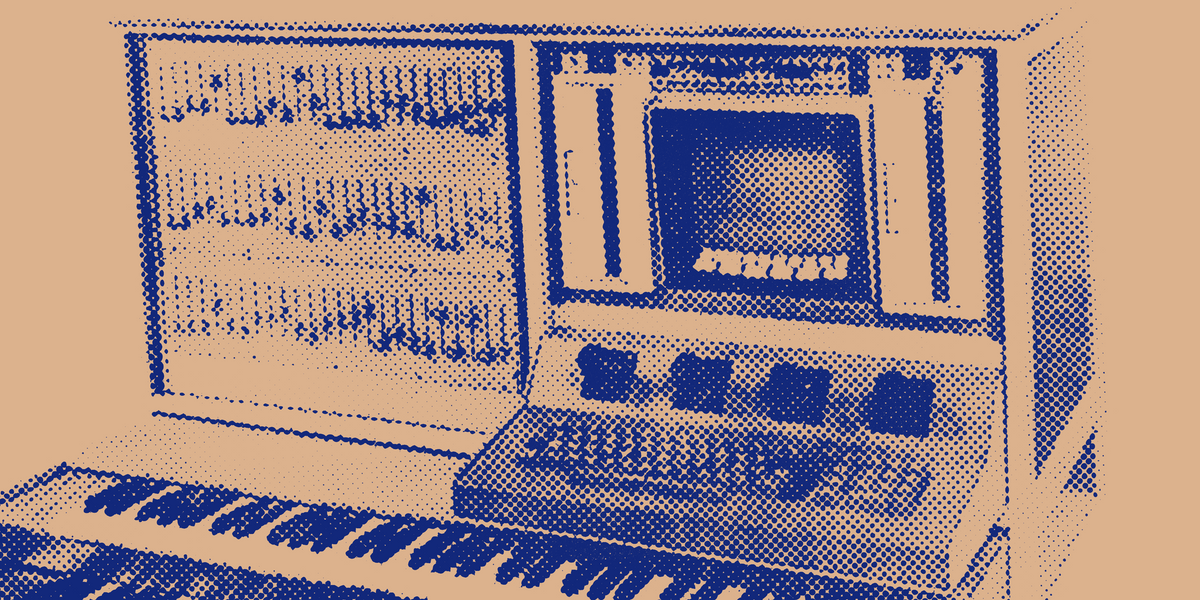The forgotten story of Bell Labs and the birth of digital music
We take digital audio for granted, but everything from synthesisers to streaming audio was hard won. And in many cases can trace back to one amazing place in time.

Bell Laboratories, colloquially known as Bell Labs, was a research and development subsidiary of the American Telephone and Telegraph Company (AT&T). Founded in 1925, it was a hub of technological innovation that has left an indelible mark on the world of technology. Among its many contributions, Bell Labs was instrumental in the development of digital audio and music synthesis, a field that has revolutionized the way we create and consume music today.
The Birthplace of Innovation: Bell Labs
Bell Labs was more than just a research facility; it was a crucible for innovation, a place where the brightest minds of the time converged to push the boundaries of technology. The company's primary focus was on developing technologies that would enhance telecommunication services, a mission that was in line with its parent company, AT&T. However, the open-ended nature of their research led to groundbreaking advancements in various fields, far beyond the realm of telecommunications.
The environment at Bell Labs was unique. It was a place where scientists, engineers, and researchers were given the freedom to explore their ideas, no matter how unconventional they might have seemed. This culture of exploration and experimentation was a key factor in the company's success. It allowed for the cross-pollination of ideas between different disciplines, leading to innovations that would have been unimaginable in a more rigidly structured environment.
The labs were designed to foster collaboration and creativity. Researchers were encouraged to share their ideas and findings with their colleagues, leading to a constant exchange of knowledge and ideas. This collaborative spirit was instrumental in driving the company's many breakthroughs, including the development of digital audio and music synthesis.
Bell Labs was also known for its commitment to fundamental research. Unlike many other corporate research labs, Bell Labs did not shy away from investing in long-term, high-risk research projects. This commitment to fundamental research allowed the company to make significant contributions to a wide range of fields, from physics and chemistry to computer science and electrical engineering.
Max Mathews: The Father of Computer Music
Max Mathews, an electrical engineer at Bell Labs, was a visionary who saw the potential of computers as tools for creating music. His passion for music and his expertise in engineering led him to embark on a journey that would revolutionize the field of music synthesis. In 1957, Mathews developed MUSIC I, the first-ever computer program for generating sound. Although this initial program was rudimentary and could only produce simple tones, it marked the beginning of a new era in music.
Mathews' work was driven by his belief that computers could be used to create any sound that the human ear could hear. A wild idea at the time that we now take for granted. He saw the computer not just as a tool for calculations, but as a musical instrument that could be used to compose and perform music. This vision was revolutionary at the time and laid the groundwork for the development of computer music.
Over the years, Mathews continued to refine and expand upon his initial program, leading to the creation of MUSIC II, III, IV, and V. Each iteration brought new features and capabilities, gradually transforming the computer into a versatile musical instrument. His work has had a profound impact on the field of music synthesis, paving the way for the development of modern music production software.
The Evolution of MUSIC
The MUSIC programs developed by Max Mathews and his team at Bell Labs marked significant milestones in the journey of digital music synthesis. Starting with MUSIC I, each subsequent iteration brought new features and capabilities, gradually transforming the computer into a versatile musical instrument.
MUSIC II, developed in 1958, introduced the concept of unit generators, which allowed for more complex sound synthesis. MUSIC III, developed in 1960, expanded on this concept and introduced a modular structure that allowed for greater flexibility in sound design.
MUSIC IV, developed in 1963, was the first version of the program to be written in a high-level programming language, making it more accessible to composers and musicians. Finally, MUSIC V, developed in 1968, introduced a number of new features, including a more user-friendly interface and improved sound quality.
These programs allowed for the creation of complex musical compositions using a computer, a concept that was revolutionary at the time. They opened up new possibilities for composers and musicians, enabling them to experiment with sounds and musical structures in ways that were not possible with traditional instruments.
Bridging the Digital and Physical Worlds: The Digital-to-Analog Converter
One of the most significant milestones in the journey of digital music synthesis was the development of the digital-to-analog converter (DAC) by Mathews and his colleague Richard Moore in 1959. The DAC was a crucial piece of technology that allowed the sounds generated by the computer to be converted into an analog signal that could be played through a loudspeaker.
Before the development of the DAC, the sounds generated by the MUSIC programs could only be heard through the computer's internal speaker, which had limited sound quality. The DAC allowed for the creation of high-quality sound, opening up new possibilities for the performance and recording of computer-generated music. The development of the DAC was a revolutionary moment in the history of digital music. It effectively bridged the gap between the digital and physical worlds, enabling the creation of music that was entirely synthesized by a computer for the first time.
John Chowning and the Discovery of FM Synthesis
John Chowning, a composer and musician who spent time at Bell Labs in the 1960s, made a significant contribution to the field of music synthesis. While experimenting with the MUSIC IV program, Chowning discovered the FM synthesis algorithm, a technique for creating complex sounds using simple waveforms.
FM synthesis involves the modulation of one waveform, or carrier, by another waveform, or modulator, to create new and complex sounds. This technique allowed for the creation of a wide range of sounds, from realistic imitations of acoustic instruments to entirely new and unique sounds.
Chowning's discovery revolutionized the field of music synthesis. It led to the development of the first commercially successful digital synthesizer, the Yamaha DX7, which made use of FM synthesis to create a wide range of sounds. This synthesizer has been used by countless artists and has played a key role in shaping the sound of electronic music.
The Legacy of Bell Labs
The work done at Bell Labs has had a profound impact on the world as we know it. The technologies and techniques developed there have not only revolutionized the field of digital audio and music synthesis but have also shaped the broader landscape of technology and culture.
The legacy of Bell Labs can be seen in the music we listen to, the devices we use, and the way we communicate. The digital-to-analog converter, for instance, is a key component in many of the devices we use every day, from smartphones to music players. The MUSIC programs developed by Max Mathews have paved the way for the development of modern music production software, enabling artists to create complex musical compositions using a computer.
References
- Red Bull Music Academy Daily. (2016). The Music of Bell Labs. [online] Available at: Link [Accessed 11 Jul. 2023].
- Valghent.com. (n.d.). Bell Labs, GROOVE & Electronic Music Composition: An Interview with Emmanuel Ghent. [online] Available at: Link [Accessed 11 Jul. 2023].
- ETHW. (n.d.). Timeline of Early Computer Music at Bell Telephone Laboratories. [online] Available at: Link [Accessed 11 Jul. 2023].
- Electronic Music Wiki | Fandom. (n.d.). Bell Labs. [online] Available at: Link [Accessed 11 Jul. 2023].
- Wikipedia. (n.d.). MUSIC-N. [online] Available at: Link [Accessed 11 Jul. 2023].
- Wikipedia. (n.d.). Bell Labs Digital Synthesizer. [online] Available at: Link [Accessed 11 Jul. 2023].
- nikolaib1983. (n.d.). Bell Labs Song. [Video] Available at: Link [Accessed 11 Jul. 2023].
- VintageCG. (n.d.). VODER (1939) - Early Speech Synthesizer. [Video] Available at: Link [Accessed 11 Jul. 2023].
- Laurie Spiegel. (n.d.). Laurie Spiegel Playing 1977 Bell Labs Hal Alles Synth. [Video] Available at: Link [Accessed 11 Jul. 2023].
- Curious Droid. (n.d.). Bell Labs - The Company that Invented the Future. [Video] Available at: Link [Accessed 11 Jul. 2023].
- Waveshaper Media. (n.d.). Laurie Spiegel - Waveshaper TV Ep.6 (Part 1 of 3: Bell Labs). [Video] Available at: Link [Accessed 11 Jul. 2023].
- 01DOGG01. (n.d.). The Incredible Machine (1968). [Video] Available at: Link [Accessed 11 Jul. 2023].
- Slaven Radovic. (n.d.). First computer to sing - Daisy Bell. [Video] Available at: Link [Accessed 11 Jul. 2023].
- HISTORY. (n.d.). Before Pixar, There Was Bell Labs | Flashback | History. [Video] Available at: Link [Accessed 11 Jul. 2023].
- Brian Roemmele. (n.d.). The Voder: 1939, the worlds first electronic voice synthesizer. [Video] Available at: Link [Accessed 11 Jul. 2023].
- Jack Stanley. (n.d.). 1924 experimental electrical recording by Bell Labs played back electrically..Amazing sound!. [Video] Available at: Link [Accessed 11 Jul. 2023].


